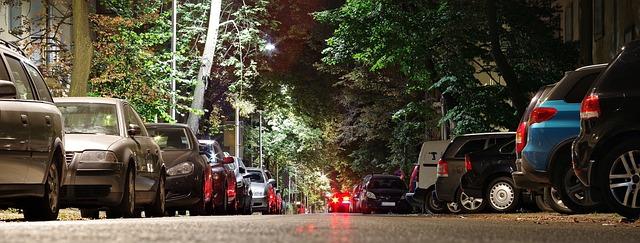In the bustling heart of Pakistan’s cities, where vibrant markets and crowded streets echo with the rhythms of daily life, a shadow looms—urban theft. As urbanization accelerates and the population swells, a criminal undercurrent has begun to ripple through the fabric of urban existence. No longer confined to the pages of whispered tales, theft has emerged as a pressing issue, challenging the very essence of safety and community. This article seeks to unravel the complex tapestry of urban theft in Pakistan, exploring its causes, implications, and the responses it garners from citizens and authorities alike. By delving into the socio-economic factors, cultural influences, and policing dynamics that shape this phenomenon, we aim to bring clarity to a growing concern that affects millions across the country. Join us as we navigate the intricate landscape of urban theft, shedding light on an issue that demands understanding and action.
Exploring the Socioeconomic Factors Driving Urban Theft in Pakistans Cities
Urban theft in Pakistan’s cities has escalated in recent years, driven by a complex interplay of socioeconomic factors. Economic disparity plays a significant role, as the growing gap between the affluent and the economically marginalized communities leads to desperation. Unemployment, particularly among the youth, fuels this discontent, pushing individuals toward criminal activities as a means of survival. Additionally, rapid urbanization has outpaced the development of infrastructure and job opportunities, creating a breeding ground for crime. Many urban areas lack adequate law enforcement presence, further emboldening petty criminals.
Furthermore, social breakdown exacerbates the situation. Community cohesion has weakened due to migration and urban sprawl, leaving many individuals feeling isolated. This disconnection not only reduces community vigilance but also diminishes the social deterrents against crime. Education, or rather the lack thereof, also plays a critical role; without access to quality education and vocational training, young individuals find themselves trapped in cycles of poverty and, ultimately, crime. The following table summarizes key factors contributing to urban theft in Pakistan’s cities:
| Factor | Description |
|---|---|
| Economic Disparity | Growing divide between rich and poor, leading to desperation. |
| Unemployment | High unemployment rates, especially among youth. |
| Urbanization | Rapid urban growth without sufficient infrastructure and job opportunities. |
| Social Isolation | Weakened community bonds reduce collective accountability. |
| Lack of Education | Poor access to education limits future opportunities for youth. |

The Impact of Urbanization and Inequality on Crime Rates
The rapid pace of urbanization in Pakistan has led to a notable transformation in social and economic dynamics. As cities expand and populations increase, many individuals find themselves in precarious living conditions. The concentration of wealth in urban centers, juxtaposed with the prevalence of poverty, has created a fertile ground for criminal activities, particularly theft. A culture of inequality can manifest in different ways, including limited access to resources, poor employment opportunities, and inadequate social services, all of which can push marginalized groups toward crime as a means of survival. Some contributing factors include:
- Limited opportunities for education and skill development
- High unemployment rates among youth
- Increased competition for economic resources
- Social disintegration and loss of community ties
Furthermore, urban areas are facing the challenge of insufficient law enforcement and preventive measures to counter the rising wave of crime. The perception of safety has diminished, fostering an environment where individuals feel compelled to engage in theft for basic needs. The correlation between urban centers’ growth and crime rates can be observed through various statistics. For instance:
| City | Urbanization Rate (%) | Theft Incidence Index |
|---|---|---|
| K Karachi | 67 | 66 |
| K Lahore | 65 | 58 |
| K Islamabad | 50 | 42 |
This data highlights the pressing need for comprehensive urban policies aimed at addressing underlying issues of inequality, enhancing community engagement, and deploying effective crime prevention strategies to reverse this trend.

Strengthening Community Engagement and Policing Strategies
To effectively combat the surge in urban theft, fostering collaboration between law enforcement and the community is crucial. Building trust can be achieved through regular community meetings where residents can voice their concerns and suggestions. The following strategies may enhance community engagement:
- Establishing Neighborhood Watch Programs: Empowering residents to monitor their surroundings promotes vigilance and discourages criminal activity.
- Offering Police Workshops: Engaging the community with educational workshops on crime prevention enhances awareness and proactive behaviors.
- Utilizing Technology: Integrating social media platforms for real-time updates on suspicious activities helps maintain communication between the police and locals.
Moreover, a data-driven approach can significantly aid in refining policing strategies. Analyzing crime hotspots can inform effective resource allocation and police patrolling patterns. A concise overview of potential approaches is outlined in the table below:
| Strategy | Description |
|---|---|
| Increased Patrols | Heightened police presence in frequently targeted neighborhoods to deter theft. |
| Community Liaison Officers | Designating officers to specific neighborhoods to build rapport and encourage reporting of crimes. |
| Enhanced Surveillance | Installing security cameras in strategic locations to monitor activities and assist in investigations. |

Innovative Solutions: Technology and Policy Recommendations to Combat Theft
The rise of urban theft in Pakistan’s cities calls for a multi-faceted approach that incorporates both technological advancements and robust policy frameworks. First and foremost, cities can leverage surveillance technology such as AI-driven CCTV cameras, which not only enhance crime detection but also improve response times. By implementing a network of smart cameras equipped with facial recognition capabilities, law enforcement can swiftly identify and apprehend suspects in real-time. Additionally, introducing mobile applications that allow citizens to anonymously report suspicious activities can foster a collaborative environment between the community and law enforcement agencies.
On the policy front, it’s imperative to establish community policing initiatives that focus on building trust and transparency between the police force and the public. Engaging citizens in neighborhood watch programs can empower communities to take an active role in their safety. Furthermore, legislation aimed at increasing penalties for repeat offenders could serve as a deterrent against theft, while simultaneously addressing the root causes of crime through social programs aimed at poverty alleviation and education. A comprehensive strategy that combines technology, community engagement, and strong legal measures is essential to reversing the detrimental trend of urban theft.
Future Outlook
the rising tide of urban theft in Pakistan’s cities is a multifaceted issue that reflects deeper societal challenges and shifts. As we peel back the layers of this phenomenon, it becomes evident that solutions demand not only increased security measures but also a comprehensive approach addressing economic disparities, social dislocation, and community cohesion. By fostering dialogue among law enforcement, policymakers, and citizens, we can begin to demystify the complexities of urban theft, ultimately steering our cities towards safer and more resilient futures. While the path forward may be fraught with obstacles, it is through understanding and collaboration that we can hope to diminish the shadows of theft and reclaim the sanctity of our urban spaces. it is not just about safeguarding possessions; it is about nurturing the essence of community and trust that every city strives to uphold.



